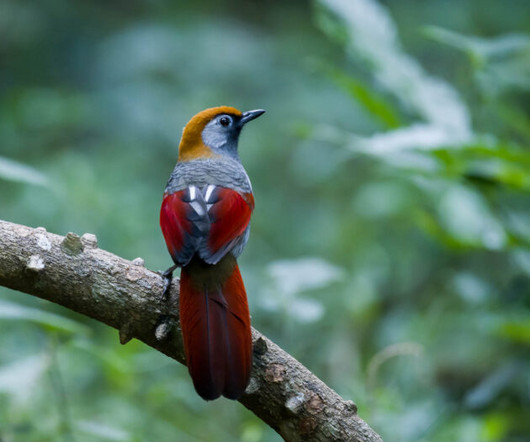Birding Hongbenghe, Yunnan (Part 1)
10,000 Birds
MARCH 11, 2024
This is the home of the Rusty-naped Pitta , admittedly one of the less glamorous of the family, particularly the subspecies found in Yunnan, but still a nice sight and still a pitta. No doubt, the Lesser NLT will be relieved not to be bossed around by its erstwhile bigger family member anymore. ” ( source ).












Let's personalize your content